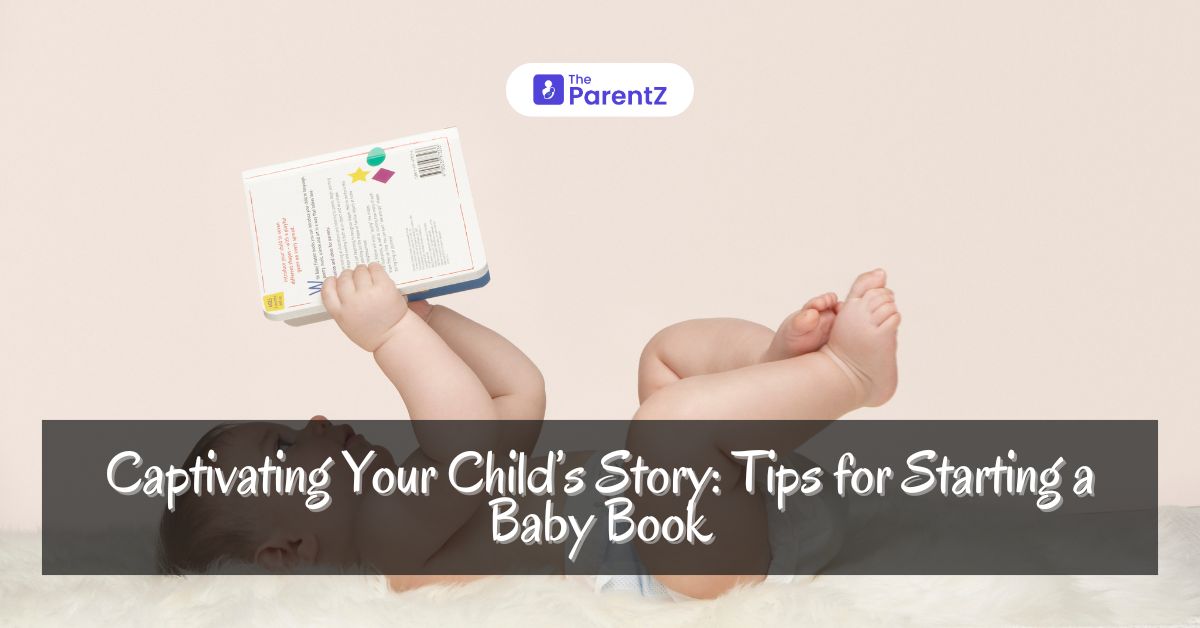A baby book is a precious treasure chest, brimming with memories that whisper back to you through the years. It is a record of your child’s growth and development, from their first smile to their first steps, from their first word to their first birthday. It is a reflection of your love and care, your hopes and dreams, and your joys and challenges. It is a gift for your child and for yourself to cherish and revisit.
But how do you start a baby book? How do you capture the essence of your child’s story without feeling overwhelmed or stressed? How do you make it unique and creative without spending a fortune or a lifetime? How do you make it fun and enjoyable without sacrificing quality or accuracy?
Don’t worry, new parents! This manual will give you easy tips to turn that empty sheet into an exciting story of the well-liked first page of your child’s life. You will learn how to select your right vessel, accept that the journey is anything but perfect, save its essence, and make it a shared tapestry as you come to the realization that traveling is more important than literally getting there. With the completion of this guide, you will be able to begin your baby book comfortably and with assurance. Let’s get started!
Find Your Perfect Vessel
To begin writing a baby book, finding your perfect vessel is the first step—the medium for holding your kid’s story. There are several choices, each of which has its own strengths and weaknesses. You can select which one fits your style and cost preference. Here are some of the most common options
1. Classic
If you are looking for a classic and everlasting design, then consider the traditional bound book. A classic bound book has a hard or soft cover and pages that are sewn or secured with another thread. A classic bound book may provide you with a sense of antiquity, permanence, and substance. You can opt for a leather cover and acid-free paper to ensure durability and quality. Alternatively, there is a ready-made book with templates and prompts or a blank one that gives you more opportunities to be creative. There are some classic-bound books here.
2. Creative
If you prefer a creative and more personalized option, unleash your inner artist with an alternative design. An alternative choice is a homemade book that you produce yourself with your own selected material and tools. The choices include a scrapbook or fabric album decorated with stickers, stamps, ribbons, and buttons. You can also make use of photographs, drawings, paintings, or collages that you have put together to create an art masterpiece. A more creative choice can give you a greater sense of ownership and technicality, as well as the feeling of being the one who originated it all. Some creative examples can be found here.
3. Digital
Alternatively, you can choose to engage in the digital world if you wish for something more trendy and convenient. A digital solution is an app that you launch on your mobile, tablet, or desktop, whereby photos can be uploaded and entries edited remotely. Alternatively, you can sync your data across all devices and share the book with other members of your family or friends via an online platform. A digital solution can give you more speed and simplicity, a feeling of openness, and freedom.
Embrace the Imperfect Journey
The next step in embarking on a baby book is to accept the imperfect journey, accepting it as an active and dynamic process of creating your child’s story. To make a beautiful baby book, you don’t need to be a professional writer or artist. All you have to do is be yourself and love a little bit more loudly. Here are some tips to embrace the imperfect journey:
Don’t sweat the messy entries
Your baby book doesn’t have to be well organized and flawless, with neat handwriting and perfect grammar. In reality, the disorganized entries that include sleep-deprived doodles and scribbled notes become very interesting thanks to their chaotic nature. They capture the truth and spontaneity of your parenting experience, and they will make you smile when you reminisce.
Start small, celebrate often
You don’t need to fill every page of your baby book with words or details about your child. In reality, the small excerpts, weekly highlights, and significant moments are much more valuable and convenient. They represent the heart and soul of your child’s tale, which you will cherish every time you look at them.
Let photos tell the story
It is not necessary to describe long and complicated descriptions or explain every detail of context and background. In reality, pictures—snapshots and candid shots—can do it at a better pace than words could. They have the facial expression and action of your child’s story, which, when witnessed, will cause nostalgia and make you happy for them.
Beyond the Milestones, Capture What It Means Deeply.
The third stage of opening a baby book is to dig deeper, going beyond the milestones and recording your child’s story. You should not limit yourself to the major events, like first smiles, first steps, or getting your child’s first word. In reality, the little details are more revealing and captivating, as they include small funny quirks along with attractive habits. They reflect the tone and spirit of your child’s story, and when you read them, you will feel awe-struck as well as entertained. Here are some tips to capture the essence of your child’s story:
Record funny quirks and adorable habits
The quirks and habits of your child make them unique and special, which even you love. Perhaps they have a peculiar pronunciation of some words or, in an adorable manner, perform one thing. There might be a favorite toy or signature move. Perhaps a peculiar laugh or tender grin. Document those quirks and habits, and rejoice in them as your child’s story.
Pen down your hopes, dreams, and whispered wishes for your child
There are many possibilities that can make your child great and inspiring. Perhaps they have a skill or like something very much. Perhaps they have an objective, a plan, or some sort of purpose. Perhaps they have a dream or want hope. Write down these dreams, hopes, and desires as part of your child’s story.
Include letters from loved ones, well wishes, and blessings
Your child is blessed with a lot of love and support, which makes them valued. Perhaps they have a grandma, brother, or friend who loves them and protects them. Perhaps they have a sponsor, advisor, or role model who motivates them and helps direct their path. Perhaps they have a benediction, prayer, or mantra that safeguards them and endows them. Include these cards, good wishes, and blessings in your child’s story; cherish them.
Make it a Collaborative Tapestry
The fourth step to starting a baby book is to make it a collaborative tapestry, a collection of voices and perspectives that enrich your child’s story. You don’t have to be the only one who writes and creates the baby book. In fact, the more people who contribute and participate, the more diverse and colorful the baby book becomes. You can involve your family and friends, your child and yourself, and anyone who has a connection to or a contribution to your child’s story. Here are some tips to make your baby book a collaborative tapestry:
Involve grandparents and siblings in writing letters or sharing memories
Your child’s grandparents and siblings act as special people, with a distinct role in the story of your son or her daughter. They have been living, observing, and participating in your child’s development. They have narratives, nostalgia, knowledge, and counsel that can add flavor to your kid’s narrative. Bring them in while writing letters or sharing stories, and value their role as a part of your child’s story.
Let your child add their own artistic touches with handprints or finger paintings
Using the child’s handprints or a finger painting is an artistic and individual method of retelling your kid’s story. They portray the development of your child, his or her talents and skills, imagination, and feelings. They are a mirror and an extension of your child’s narrative. Allow your child to add their own artistic twist using finger prints or other arts as part of the story.
Create a time capsule
Create a time capsule with ticket stubs, hospital bracelets, or tiny first shoes. Tangible things that remind you of your child’s story are his or her ticket stubbes, hospital bracelets, and miniature first shoes. They form a chronicle of your child’s stages and adventures, their origins and destinations, their travels around the world, and their discoveries. They are a picture and memento of your child’s tale. Design a time capsule based on such material as ticket stubs, hospital bracelets, or even tiny first shoes, and treasure it with your child’s story.
Remember, it’s about the journey, not the destination.
The fifth and final step to starting a baby book is to remember that it’s about the journey, not the destination, the process of creating and capturing your child’s story, not the product. You don’t have to worry about the end result, the final product, or the finished book.Embrace the process of creating and capturing your child’s story, the giggles as you try to capture their first smile, the quiet moments spent writing down precious observations, the messy fingerprints adorning the pages. These are the moments that will truly become treasures, not the finished book itself.
Let go of perfectionism and enjoy the ride. Scribble down funny anecdotes on a napkin, stick in a concert ticket stub from a memorable family outing, tape in a fallen lock of hair. These messy, imperfect pieces tell a far richer story than any perfectly curated timeline. So relax, have fun, and remember, the journey of documenting your child’s wonder is the magic, not the final page.








Be the first one to comment on this story.